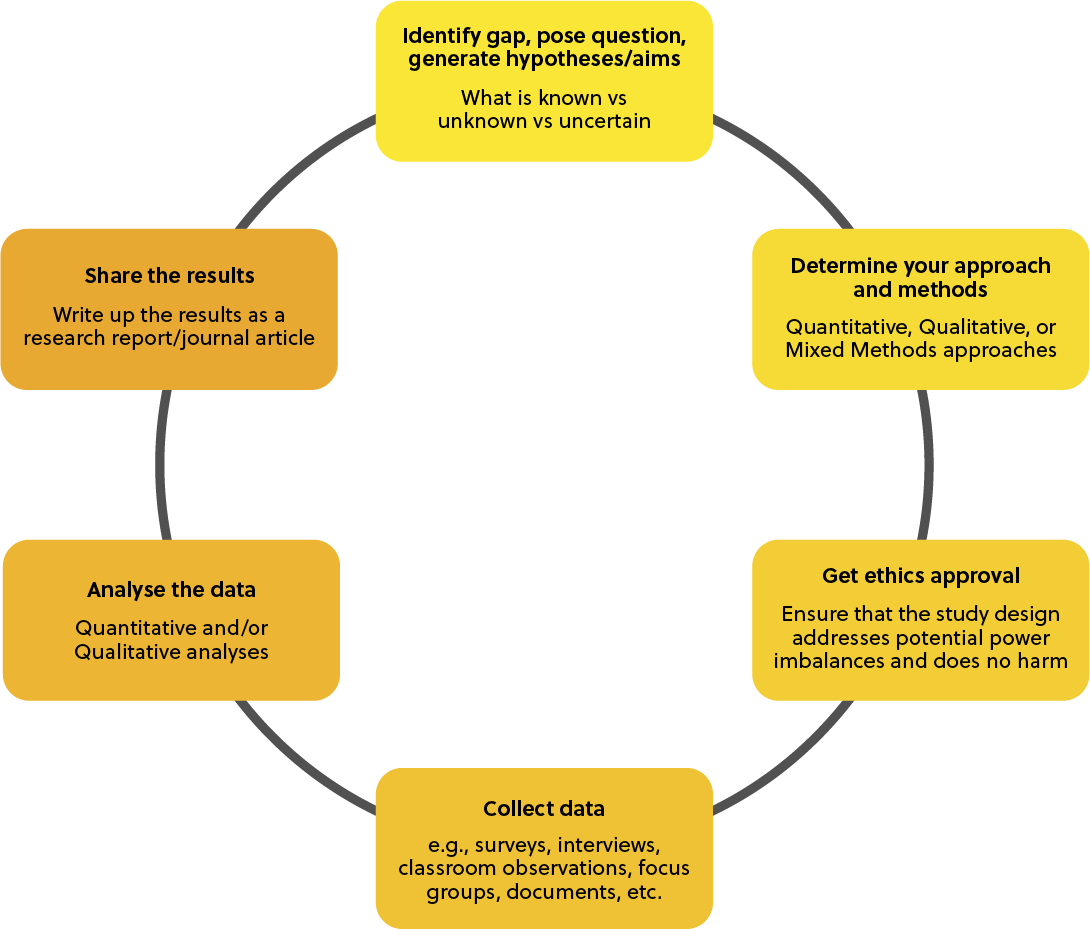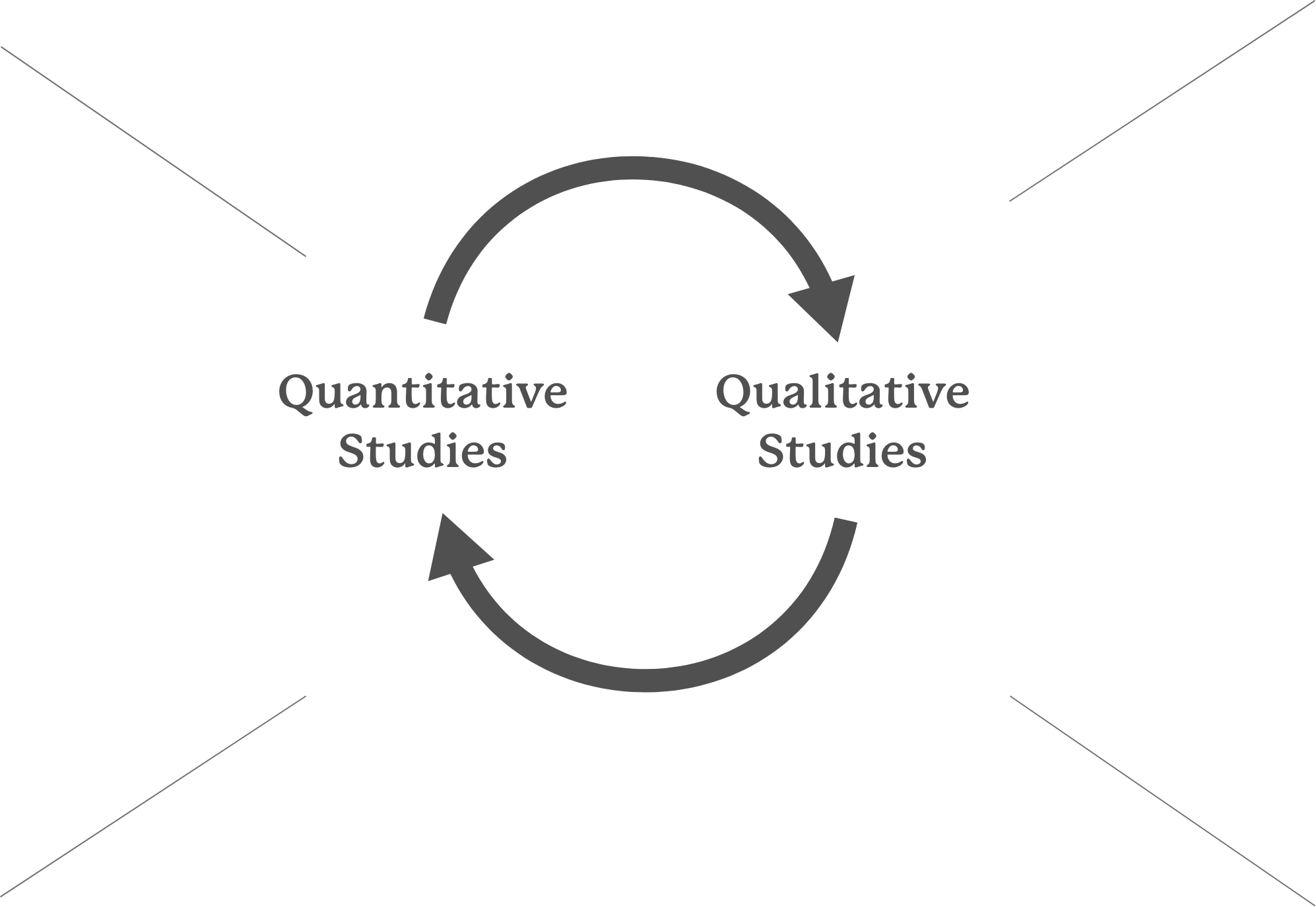Reading and
Understanding
Research
Research comes in many forms. Research can be qualitative, quantitative, or mixed methods (combination of qualitative and quantitative approaches). Within these approaches there are multiple designs. We have provided some examples below.

Quantitative and Qualitative research are both needed to understand any educational phenomena (e.g., reading comprehension, teachers’ interpretation of the curriculum, motivation in STEM).
Quantitative research focuses on the “what” and “why” of a phenomena. Quantitative research often uses large sample sizes to establish broad trends and “current state” of a phenomena and to investigate what may other relevant factors (e.g., predictors and outcomes. Quantitative research generates numerical data. For example, data may come from surveys, experiments, or observations.
Qualitative research focuses on understanding the “how” of a phenomena. Qualitative research often uses smaller sample sizes to dig into students’ and teachers’ personal experiences of a phenomena and how they think about it. Qualitative research generates data that are non-numerical. For example, the data may come from interviews, focus groups, observations, or documents.
What we learn from one type of research informs how we do future research in both areas.
Quantitative and Qualitative research are both needed to understand any educational phenomena (e.g., reading comprehension, teachers’ interpretation of the curriculum, motivation in STEM).
Quantitative research focuses on the “what” and “why” of a phenomena. Quantitative research often uses large sample sizes to establish broad trends and “current state” of a phenomena and to investigate what may other relevant factors (e.g., predictors and outcomes. Quantitative research generates numerical data. For example, data may come from surveys, experiments, or observations.

Qualitative research focuses on understanding the “how” of a phenomena. Qualitative research often uses smaller sample sizes to dig into students’ and teachers’ personal experiences of a phenomena and how they think about it. Qualitative research generates data that are non-numerical. For example, the data may come from interviews, focus groups, observations, or documents.
What we learn from one type of research informs how we do future research in both areas.
Dissecting a Research Journal Article/Report
Journal articles/reports follow consistent structures. This structure allows the research project to be justified, described, and explained in a clear and logical manner. Specific information can be found in each section – here is a brief description of each section and a guide to what information can be found in each section.
Abstract: Report summary for prospective readers
- Core focus of paper
- Key findings
- Sample size
- Overarching description of methods (i.e., experimental, correlational, qualitative, etc).
Introduction: Explanation and justification of the research question
- Prior research on topic (citations can be found in reference list)
- Key research question (s)
- Theory that underpins research question
- Justification for further study in this area; explanation of why this is an important area and question to address
- Hypothesis/hypotheses
Methods: How the study was conducted
- Sample size
- Description of sample: who was included in the study? Was it specific to one context or is it more generalisable to the broader population?
- Location of the study (e.g., in classroom, laboratory, etc).
- Materials/instruments that were used to address the research question (e.g., survey questionnaires/scales, interview questions, observation tool, etc).
- Evidence of reliability and validity of the material used
- Procedure of the study: tasks included in the experimental design, online or in-class survey, individual interviews, focus groups
- Analytic plan explains how each type of data were analysed to answer each research question/hypothesis
Results: The outcomes of the procedure
- Detailed results of analysis; includes all significant and non-significant findings
- Tables
- Figures
Discussion: Interpretation, explanation and implications of results
- Brief summary of key findings
- Identification of whether hypotheses are supported by the results
- Explanation and interpretation of the results that did occur
- Discussion of implications of findings for research – how the findings may be applied to the classroom
- Directions for future research
- Limitations of current study